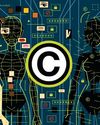Try GOLD - Free
Dog Detectors
Scientific American
|September 2025
Pessimistic dogs may be better sniffersand other pointers for smelling out disease

BILLY, A FLOPPY-EARED LITTLE beagle, darts around a platform sniffing a series of holes. Each hole contains a used surgical-type mask bearing a different human's distinct mix of scents. But her sharp nose is hunting for just one such combination: the one that signals cancer.
Cancer can change a person's “volatilome,” the unique set of volatile organic compounds found in breath, sweat, blood and urine. Billy and her cohort have learned to sniff out these subtle scent cues in masks worn by people with cancer diagnoses. Researchers are also studying how dogs can detect diseases such as COVID and malaria, as well as psychological conditions, including post-traumatic stress disorder.
Scientists discovered dogs’ powerful disease-smelling skills in 1989, when a dog detected cancer in its handler. But clinicians still do not routinely use dogs for diagnosis. Besides the obvious logistical challenges, dogs vary greatly in their olfactory accuracy. Researchers are increasingly finding that disease-sniffing prowess may come down to individual dogs’ personality—and how well their handlers know them. New research efforts are focused on figuring out which dogs would be best for the job and on interpreting dogs’ behaviors during a smell test.
Sharyn Bistre Dabbah, a veterinary scientist now at the University of Bristol in England, set out with colleagues at the U.K. charity Medical Detection Dogs to learn how the animals’ personalities—especially their level of optimism or pessimism—affect diseasedetection skills. Their results appeared recently in PLoS One.
This story is from the September 2025 edition of Scientific American.
Subscribe to Magzter GOLD to access thousands of curated premium stories, and 10,000+ magazines and newspapers.
Already a subscriber? Sign In
MORE STORIES FROM Scientific American
Scientific American
Will We Run Out of Rare Earth Elements?
These valuable but difficult-to-extract metals are increasingly important to modern life
1 mins
December 2025

Scientific American
Copyright Laws Can Stop Deepfakes
The U.S. should give its residents rights to their own face and voice
4 mins
December 2025

Scientific American
50, 100 & 150 Years
“The list of first-aid procedures that the medical profession encourages laypeople to undertake is short because of concern that tactics applied in ignorance may do more harm than good.
3 mins
December 2025

Scientific American
Dramatic Atmosphere
Exoplanet TOI-561 b has air where none should persist
2 mins
December 2025

Scientific American
The Mother of Depressions
Postpartum depression is a leading cause of death among new mothers. A new type of drug offers better, faster treatment
16 mins
December 2025

Scientific American
Going Rogue
A massive study may improve the prediction of dangerous rogue waves
3 mins
December 2025

Scientific American
Phages Caught Sleeping
Bacteria use hibernating viruses to immunize themselves
2 mins
December 2025
Scientific American
THE COVERT HERBARIUM OF CRYPTOGAMIC BOTANY
A century ago a father and a son labored to replicate the intricate structure of nearly eight hundred species of plants in four thousand delicate models.
1 min
December 2025

Scientific American
Are AI Chatbots Healthy for Teens?
Kids crave approval from their peers. Chatbots offer an alternative to real-life relationships, but they can come at a price
5 mins
December 2025

Scientific American
The Myth of the Designer Baby
Parents beware of any genomics firm saying it can help them with “genetic optimization” of their embryos
5 mins
December 2025
Listen
Translate
Change font size

